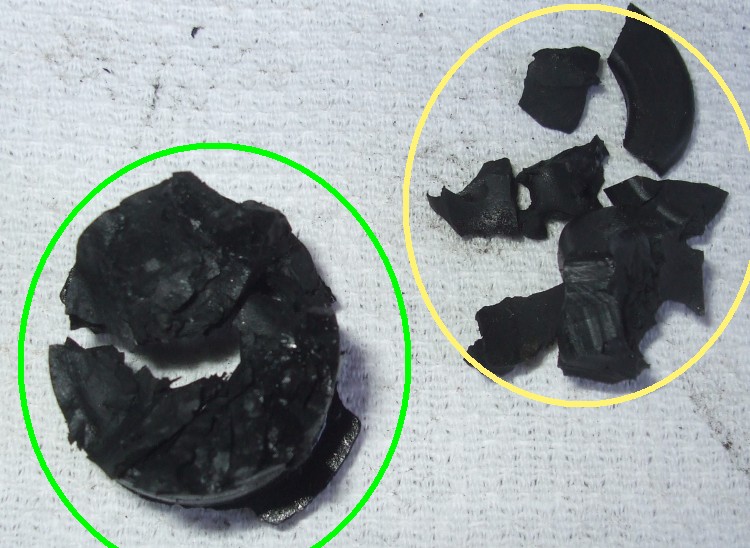Hello everyone. I have taken the radiator out. And I discovered that this component at the top is not the alternator. I never paid much attention to it until now. I was wondering if anyone knows what it is and if I can remove it from the end. I have inserted a photo below.
Are you referring to the air pump?
Yes I am referring to the air pump. Is there a way for this to be removed permanently? Is it essential to the engine
Been discussed many times. The air pump only functions when the engine is cold; once warmed up, the pumped air must be dumped because pumping it into the exhaust tract would confuse the oxygen sensors. There is a valve that dumps the pumped air into the RH air filter housing – on the wrong side of the air filter, so when the air pump comes apart it chunks parts directly into the engine.
Removal of the pump itself and the diverter valve is simple enough. Removal of the air injection rail on top of the engine is a bit trickier, involving plugging the holes with something suitable to prevent exhaust leaks. Removal of the pipe between the diverter valve and the air rail is pretty near impossible without removing the engine from the car, so most opt to abandon it in place until they have the engine out for some other reason.
Removing the air pump removes the tensioner for the belt that drives the A/C compressor. Simplest fix there is to find a Euro-spec idler pulley. Another way to go is to install a Delco alternator in place of the air pump and remove the OEM Lucas alternator and belt entirely, reducing the number of belts from 4 to 3. A Delco alternator mounts similarly to the air pump, but you have to fit a pulley that works with a 5/8" belt, which means larger diameter than the usual alternator pulley.
this is the the plug for chain tensioner access hole
usually gone hard and brittle, but you can take it out and replace it either by a new one , or an aluminium replacement
One recommended improvement for that timing chain tensioner plug is to buy a brand new rubbery one and immediately cut the ears off it so it just slips into the hole. Then fab a small sliver of metal to bolt down under the head of one of those nearby bolts that you can just bend down onto the rubber to hold it in place. Hence, when the new plug gets old and crumbly, you can just slide it out and slide in a new one without having to fight with it or break off pieces that fall down into the timing chain cavity.
What is the best way to remove the current old plug?
I don’t believe that’s an original plug; I think someone just found a rubber plug that more or less fit. No good ideas on removal; it’s just a matter of getting under one edge and prying.
mine looked about the same as this one, and the oem rubber one I bought was similar too , with 2 “flats” on the sides
I had to use some gasket removal hooks to extract the bits as it broke out
I have the new plug and a type of modded system for it. Do you use gasket dressing for it or does the plug go in by itself?
The new plug should be rubbery rubber. As I’ve mentioned before, my suggestion is to cut the ears off that hold it in place, so it’s easier to remove when it’s old and hard. Then fab up a little metal tab under a nearby bolt head to hold it in place. I didn’t use any gasket dressing on mine, but I suppose you could if you were worried about leakage. Just make sure to use something non-hardening so you can get the plug out when you need to.
I hate it when rubbery rubber is not rubber.
Honestly, some of the rubber parts on this car look more like Bakelite when they come out.
Cork screw from a wine bottle opener???
Carl
I tried this and it failed : access isn’t that oof, and the flat internal part is thin
I had better success with a gasket hook, small enough to get through the plug and pull the thicker sides from the back

the small bits came from the surrounding flat area, and they broke at first pull, the bigger ones were pulled with the hook

and I agree with Kirby : most rubber parts on my car had gone very hard and brittle
What is this? It wasn’t hooked up to anything in the car
Also does anyone have a diagram of the vacuum lines on the passenger side of the car
Colin,
That is a vacuum solenoid valve, wiring and connectors for the cruise control.
Paul
Alright. I removed the cruise control and must have just forgotten to take it out. Thank you


